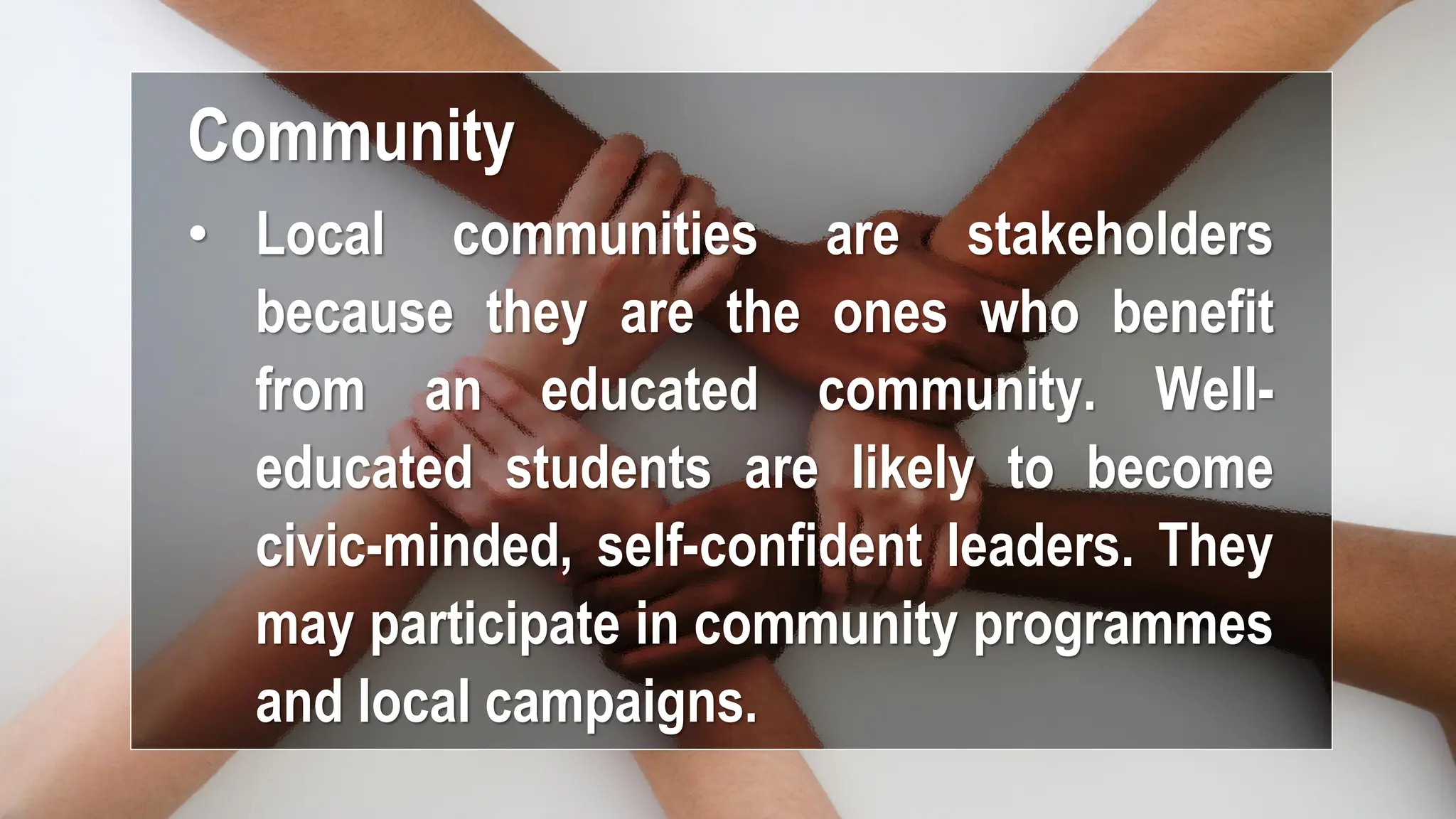The document discusses stakeholders in education and community involvement. It identifies stakeholders as students, parents, teachers, administrators, government and businesses. Involving stakeholders improves schools by allowing ideas and common goals. There are internal stakeholders like students and teachers, and external like government and businesses. Community resources can be utilized by organizing field trips, inviting community members to speak, and involving parents. Effective coordination requires cultural sensitivity, integrity, follow-up, and two-way communication.





































































